How to Choose a Panel Mounted Fuse Holder
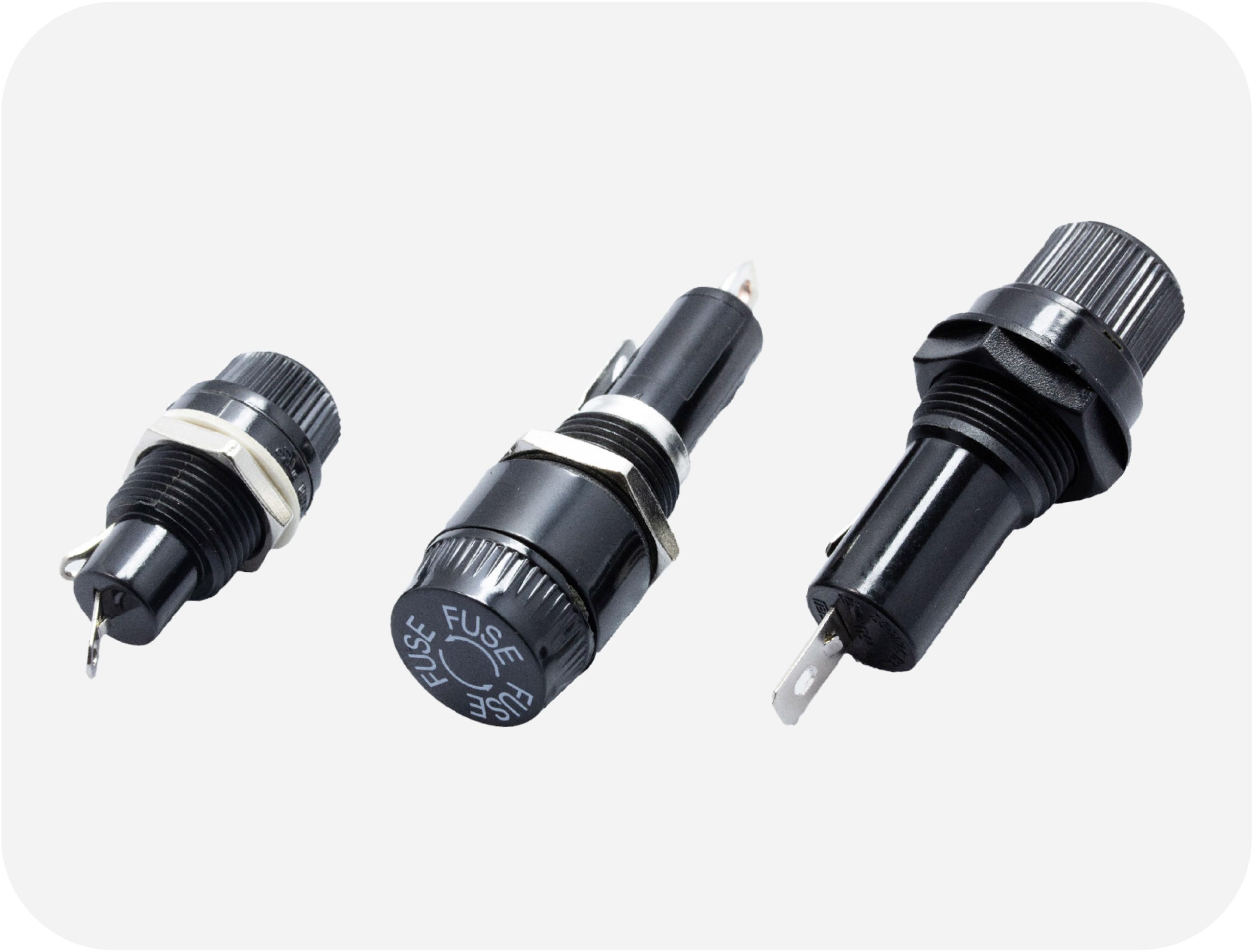
Panel mounted fuse holders are designed for mounting fuses into applications in a way that makes it both safe and easy to replace an open fuse. Not only do these fuse holders boost convenience, but they are also shock safe, meaning that removing the cap of the fuse holder also removes the fuse, preventing the possibility of electrical shocks. Due to the convenience this type of fuse holder provides and the added shock security it offers, panel mounted fuse holders are often used in electronics and industrial applications that require easy accessibility of the fuse and increased security of the user.
Unlike with fuses, no two circuit device manufacturers have the the same panel mounted fuse holders. There are slight cosmetic or functional variations among all the various manufacturers that differentiate their panel mounted fuse holders from one another. However, most designs, regardless of the manufacturer, are functionally the same. They are also interchangeable in many situations. There are a few factors that come into play when determining whether one panel mounted fuse holder can be swapped out for another, such as the voltage and current ratings of the application and the holder. These are important to note when deciding on a product.
At OptiFuse, we offer more than 50 different styles, shapes, and sizes to choose from. Below is a synopsis of the various parameters that both engineers and buyers should be aware of when choosing the right panel mounted fuse holder for their applications.
Fuse Size
Panel mounted fuse holders are intended to mount one of three basic fuse types:
• 5 x 20 mm fuses
• 6.3 x 32 mm fuses (3AG – 1/4″ x 1 1/4″ fuses)
• 10.3 x 38.1 mm fuses (5AG – 13/32″ x 1 1/2″ fuses), sometimes called midget fuses
For more details on selecting the right tube fuse size, see our comprehensive Tube Fuse Selection Guide. See our Fuse Selection Guide for complete context.
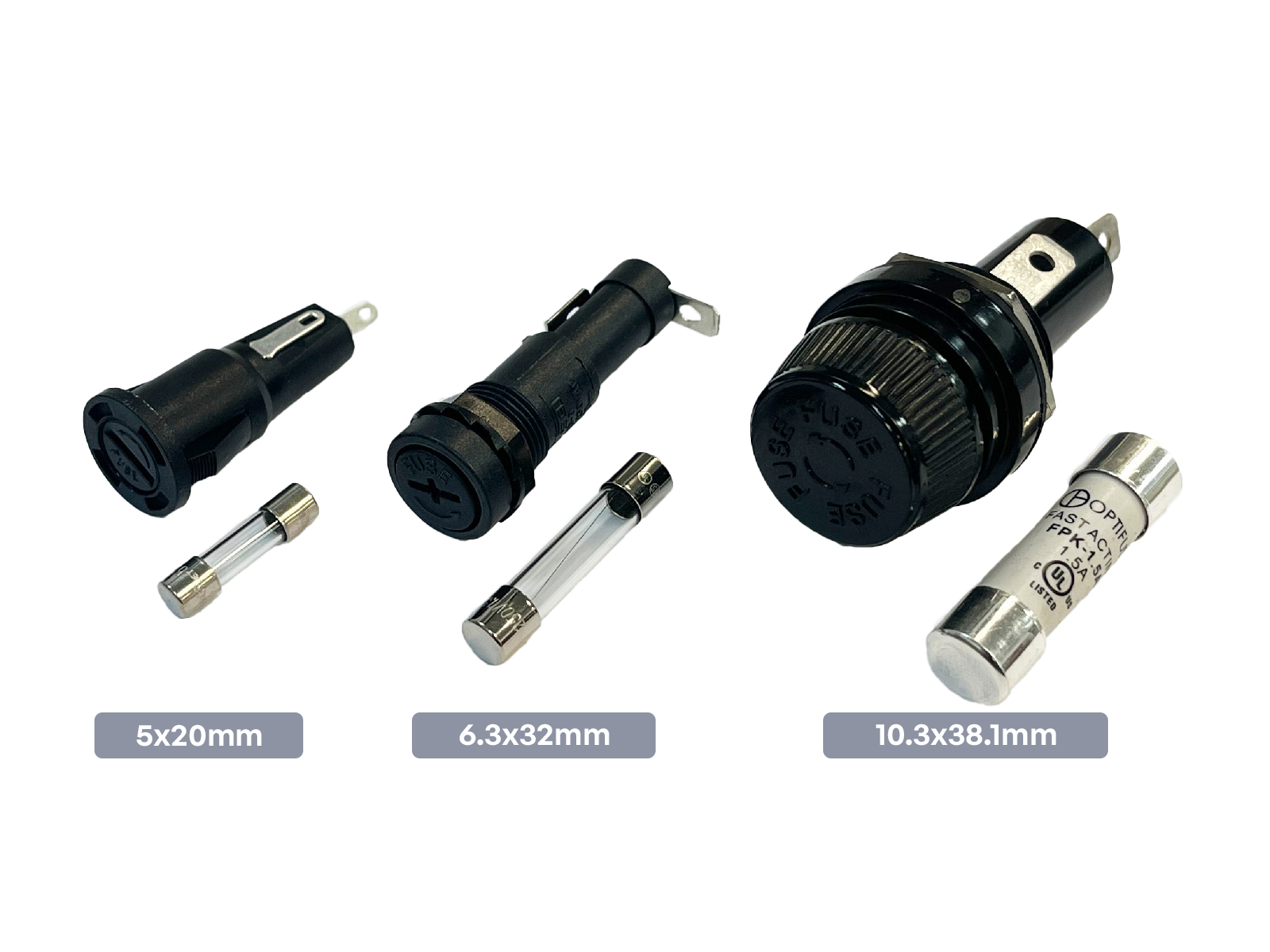
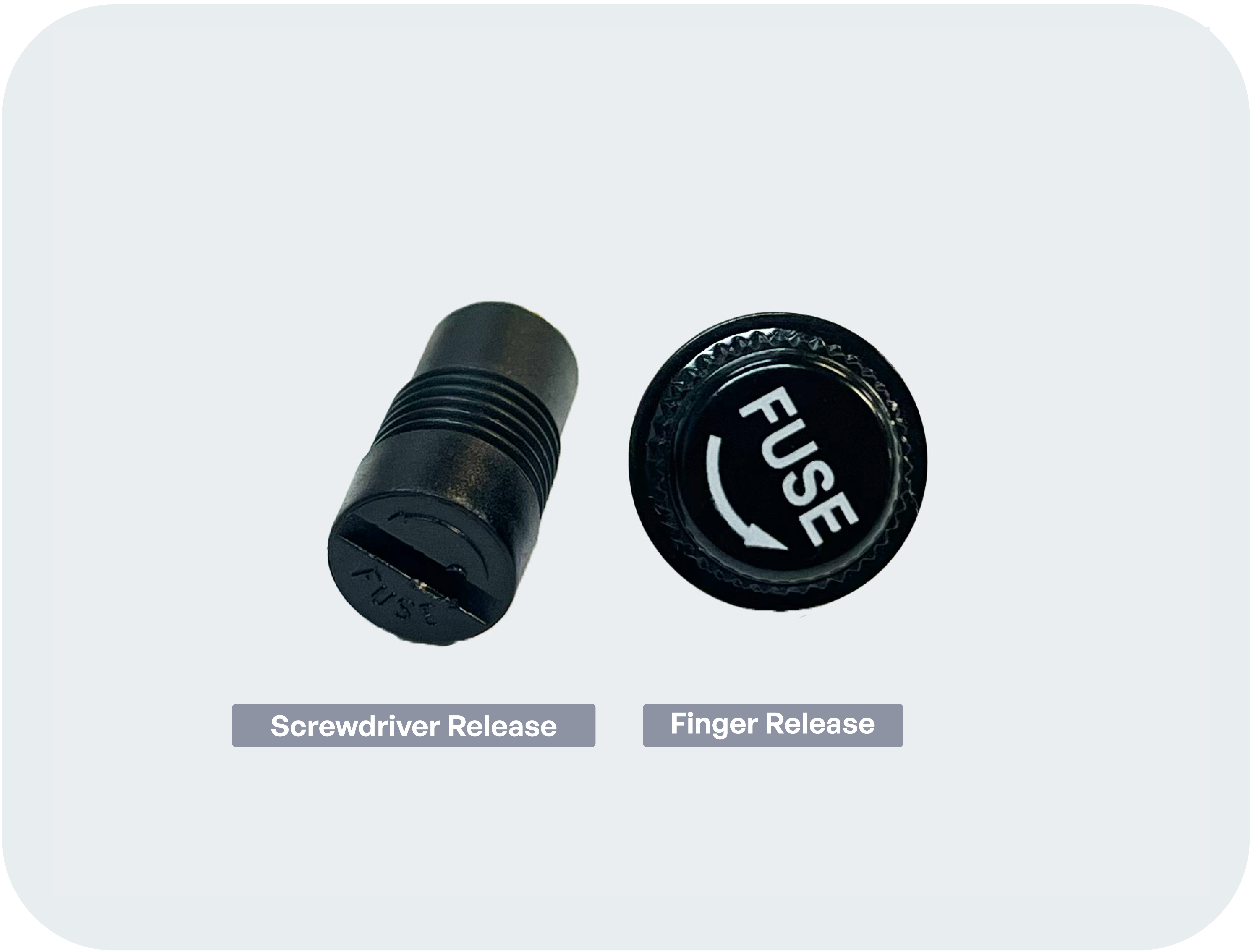
Release Type
There are two basic release designs: One that allows the user to remove the fuse with just a twist of their fingers, and one that requires a tool (such as a screwdriver) to remove the top.
-
Finger-release holders, such as the PMA-KB-08-Q1S, offer quick and easy access.
-
Screwdriver-release holders, like the PMC-DB-02-Q1S, offer added security in applications where accidental removal must be avoided.
Cap Type
Screw caps provide superior water and condensation resistance (which is especially useful in outdoor applications) while bayonet caps provide convenience, requiring just a ¼ turn of the cap to remove it. Screw and bayonet caps are available with both finger knobs and screwdriver slot configurations.
-
Screw caps offer strong water resistance, ideal for harsh environments, like the PMC-KS-01-SOS.
-
Bayonet caps, such as the PMA-KB-03-Q2S, provide quick, tool-free fuse removal for easy access.
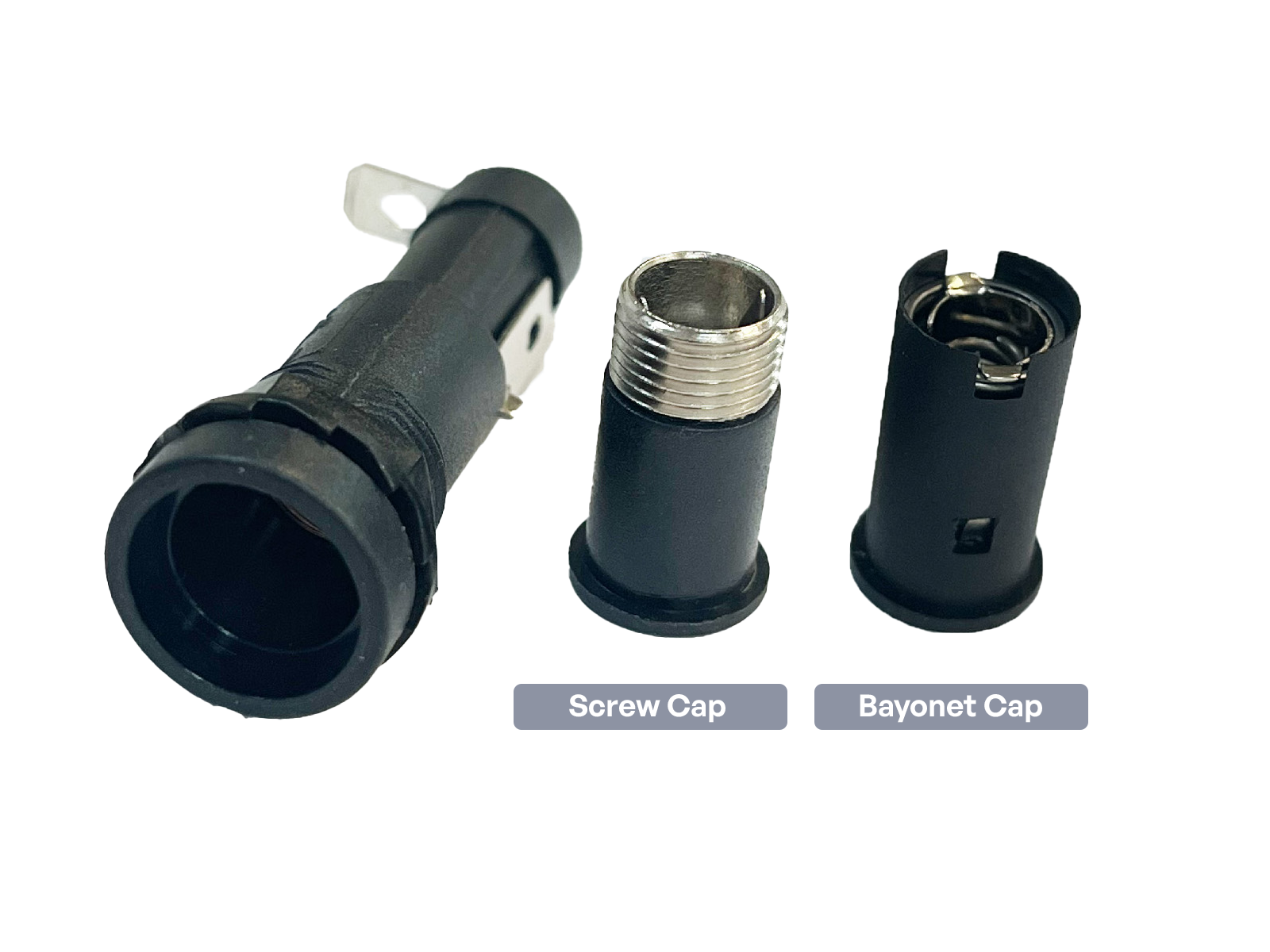
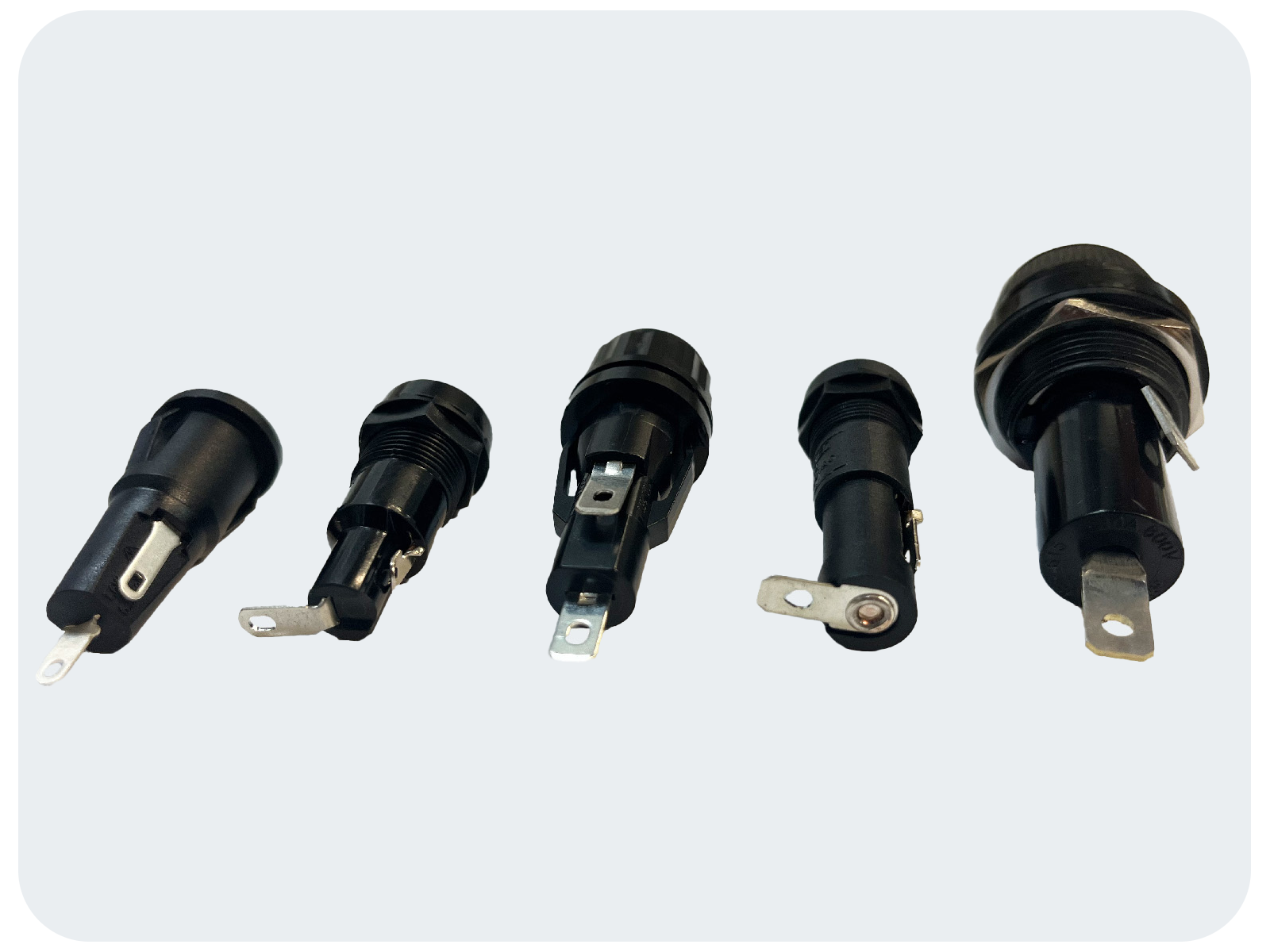
Terminals Style
Metal terminals provide a point of connection into a circuit. The options are:
• 1/4″ (0.250″) Quick Connects — see models like the PMG-KB-01-Q2S
• 3/16″ (0.187″) Quick connects— for example, the PMA-DB-04-Q1S
• Solder Tabs, used in higher current situations or in applications with a high amount of vibration — such as the PMA-KB-01H-SOS
The end terminal of the holder can be straight or right angled.
Mounting Type
OptiFuse provides snap-in and screw panel mounting options.
The snap-in feature saves valuable production time for OEMs. These fuse holders can be snapped into a mounting hole instead of requiring the fastening and tightening of a rear nut to secure the fuse holder.
A typical mounting hole is approximately 12.7 mm in diameter but can vary slightly for each manufacturer and/or part number.
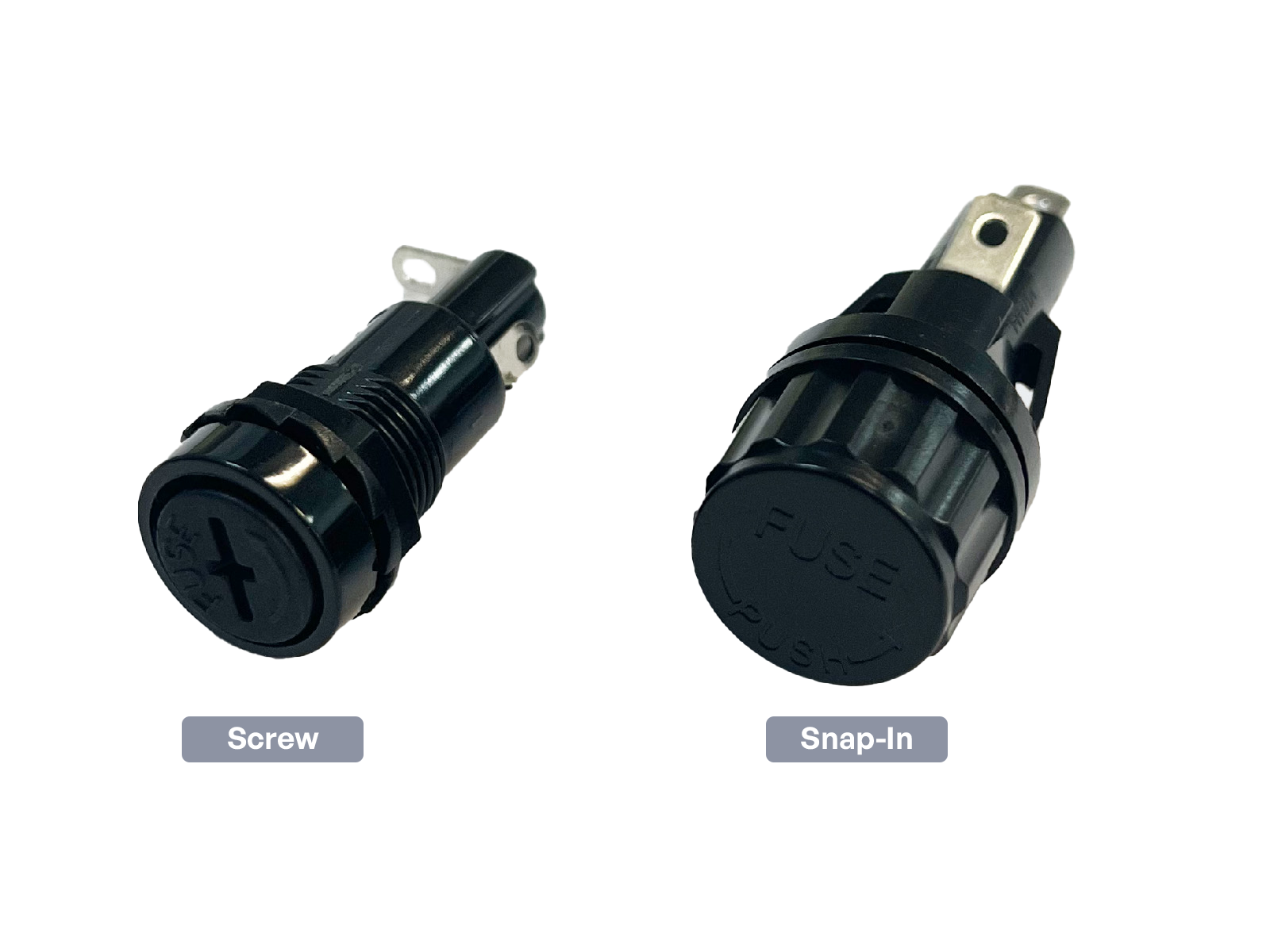
Additional Factors
In addition to the basic panel mounted fuse holder options, there are some other factors to consider. These include:
• The overall length of the fuse holder, in terms of the length in front of the panel (sometimes referred to as the profile height) or behind the panel.
• Whether or not the fuse holder has a color-coded knob face.
• Whether the knob on the fuse holder is knurled (round and often ridged for easy turning of the knob) or fluted (round with slots for easy gripping)
• Whether the holder has plastic or metal mounting nuts.
There are many options and configurations available with panel mounted fuse holders, which is the main reason why manufacturers’ fuse holders vary slightly from one to another.
Samuel Kenny, Product Manager at OptiFuse, leads the development of advanced circuit protection products for automotive, marine, and industrial sectors. He designs custom solutions and shares expert fuse selection tips on the OptiFuse Blog.